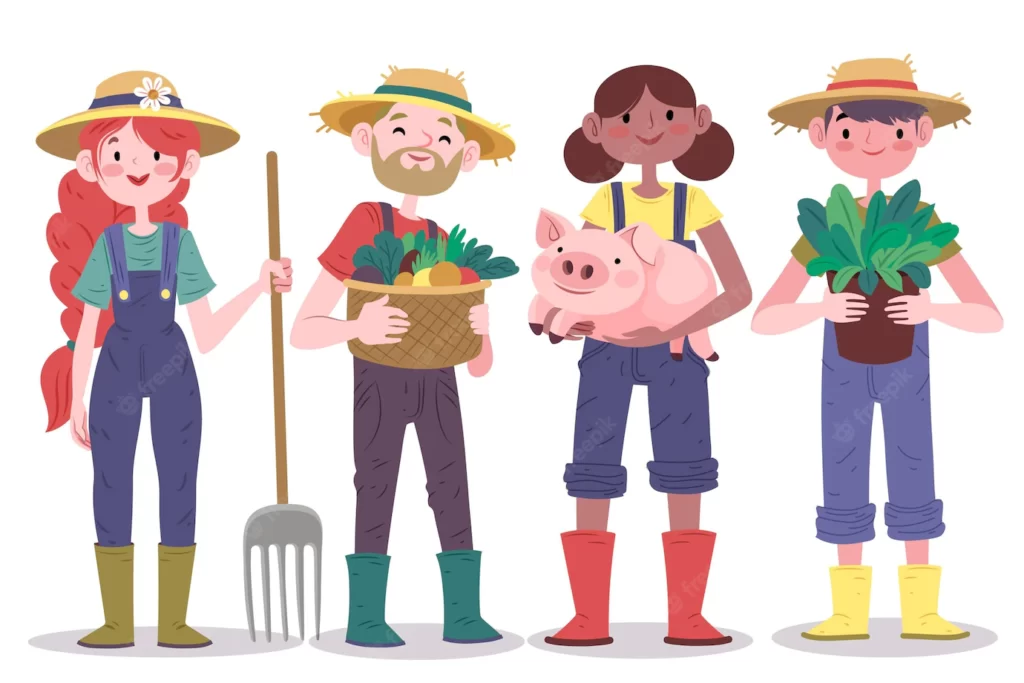After decades of intensive industrial farming, “sustainable agriculture” is gaining worldwide recognition. Although industrial agriculture comes with many benefits, it has its own risks and challenges, and farmers are no longer interested in using this method.

Today, eco-friendly farming has become a top priority among farmers. Sustainable agriculture contributes to crop productivity, feeds the world population, and helps to preserve natural ecosystems. If you are a farmer and seek a more sustainable approach, here are five of the most prominent eco-conscious practices to help you get started!
Each crop type absorbs various kinds of nutrients and affects the soil differently. That’s why planting the same crop for a long time typically results in the depletion of certain soil nutrients. Crop rotation is a practical, sustainable agriculture solution that helps farmers prevent soil erosion. Rotating crops means planting diverse crops on the same plot of land and at different periods. In this farming method, the farmers are not allowed to plant anything for a given season so that the soil can restore its potency. Like any other method, crop rotation offers different benefits, including:
- Increasing soil fertility
- Boosting yields
- Enhancing soil nutrients
- Reducing soil erosion
- Tackling pest problems
- Suppressing weed growth
- Cutting the cost of production

Read more: Organic Production
No-till Farming
Conventional plowing known as tillage prepare farms for planting and tackling weed problems; however, they can result in significant soil loss. No-till farming, also known as “natural farming” or simply “do-nothing,” is an effective, sustainable agriculture solution that helps farmers lessen erosion and enhance soil health by placing seeds directly into the intact soil. It is a farming method to grow crops without soil-disturbance techniques like digging, stirring, and overturning. No-till farming has the following benefits:
- Reducing fuel consumption
- Decreasing labor costs
- Preventing soil erosion
- Reducing herbicide runoff
- Conserving soil moisture
- Reducing carbon footprint
- Increasing crop yields
- Enhancing soil biology

Cover Cropping
In farming, cover crops are planted in fields to enhance the soil rather than being harvested. Unlike cash crops, which are cultivated for profit, cover crops are grown during off-season periods to prevent the soil from erosion and nutrient loss. They also keep weeds in check, restrain pests and soil diseases, improve water availability, and boost biodiversity on the field. They are generally considered living mulch to enrich the soil and replenish its nutrients. Some of the most common cover crops include clovers, mustard, hairy vetch, rye, oats, buckwheat, radish, Sudan grass, etc.
As an integral part of organic no-till, cover crops help farmers return nutrients to the soil and combat weeds rather than relying on synthetic fertilizers and chemical pesticides. Chemical methods have a multitude of unintended repercussions, such as soil erosion, water pollution, and loss of crucial biodiversity, among other things. Since synthetic inputs are considerably criticized in sustainable agriculture, organic farmers prefer to use cover cropping to obtain the same results. The most crucial effects of cover cropping on soil and crop productivity include the following:
- Increasing soil fertility
- Improving soil’s biological and physical properties
- Reducing the need for chemical pesticides
- Boosting crop yields with better soil quality
- Preventing soil and wind erosion
- Protecting water quality
- Conserving soil moisture
- Suppressing weeds and insects diseases
- Increasing water infiltration
Integrated Pest Management (IPM)
Insects and weeds can do costly and irreparable damage to crops and livestock. They are a significant threat to the health of our vital natural lands and urban spaces. Many methods tackle pest problems, including mechanical and biological pest controls. Integrated Pest Management (IPM) keeps the pest population in check while minimizing the excessive use of chemical pesticides. It is a sustainable approach principally based on biological rather than chemical methods.

With IPM, farmers can use the most recent, comprehensive data on the life cycles of pests and their impacts on the environment. Then, they utilize this information to pick the best available pest control methods with the least possible threats to people, property, and the ecosystem. Instead of simply eradicating the pests, IPM helps farmers analyze the environmental factors influencing the pest and its potential to increase. Armed with such data, farmers can create adverse conditions for the pest. Once a pest issue is recognized, IPM will ensure that chemical pesticides will only be employed as the final solution. Moreover, IPM provides significant benefits like:
- Reducing the scale of air and groundwater contamination
- Promoting bio-based pest control alternatives
- Protecting non-target species by reducing the impact of pest management
- Reducing or eliminating problems associated with pesticide residue
- Decreasing labor and public exposure to pesticides
- Increasing the cost-effectiveness of the pest control program
- Maintaining a balanced ecosystem

Agroforestry
Today, agroforestry is considered one of the most effective, sustainable agriculture solutions, particularly in drylands. It is, in fact, a land-use management system that blends both agriculture and forestry methods to achieve a more sustainably diverse and productive output. Trees play a significant role in agroforestry, as they help maintain the appropriate temperature and soil humidity, minimize runoff, and shield crops against wind or rain. Trees have many other advantages, like helping farmers provide shade and shelter for plants, livestock, and water supplies, as well as offering potential sources of income.
The ever-increasing food demand worldwide has made agroforestry a promising farming method for confronting food insecurity. Agroforestry has many other key benefits, including:
- Improving the wildlife habitat
- Stabilizing soil and micro-climate
- Ensuring soil fertility through closed nutrient cycles
- Remediating contaminated soils
- Ensuring sustainable food production
- Mitigating climate change
- Preventing damage to forests
Let’s Make a Difference with Sustainable Agriculture Solutions
The world is plagued with an increasing population. Estimates reveal that by 2025, we’ll need nearly 70% more food than is presently being produced to feed the anticipated 9.6 billion global population. This is a serious challenge that requires all our attention. We all must seek sustainable agriculture solutions to guarantee the world’s food supply and ensure the least impact on the ailing planet.
Last Word
The methods and practices reviewed in this post are some of the most prominent solutions utilized worldwide to help farmers prevent soil erosion and protect air and water resources from harmful contamination from the overuse of chemical pesticides and fertilizers. However, the list of solutions is not limited to these, as more eco-friendly farming methods are being developed and practiced in various countries.

